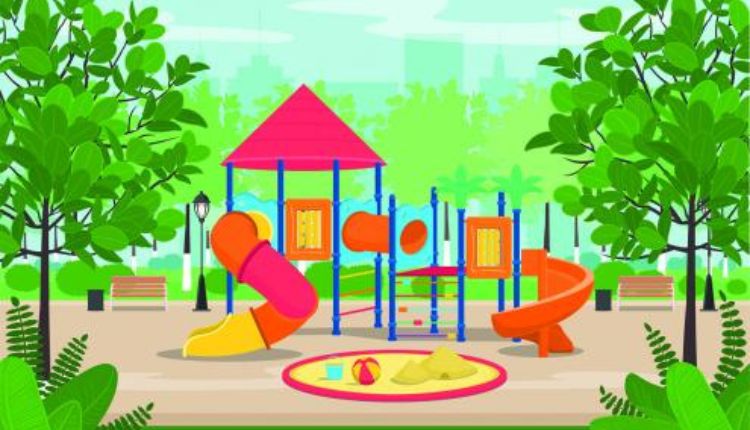Playgrounds are great for kids as they help develop their strength, coordination and depth perception. However, it’s important for parents to look at safety guidelines when choosing a playground. Look for a soft, padded surface under equipment that will mitigate injuries from falls. Make sure that the surface is inspected regularly and properly maintained.
Safety Standards
Keeping playgrounds safe requires a broad perspective of equipment maintenance, environmental factors and safe user behavior. Injuries from unsafe equipment or surfaces discourage children from being active which can lead to long term health problems including obesity and depression. Injuries on playgrounds often occur when children fall from equipment. It is important that surfaces under playground equipment be soft and absorbent to protect children from serious injuries. Playground equipment should be placed on a hard, durable surface that is surrounded by at least 12 inches of soft, impact-absorbing material. Surfaces should also be free of sharp edges and tripping hazards.
Adult supervision is the most important factor in preventing playground injuries. Parents, care givers, teachers and day care workers should supervise children closely while they are playing on 안전놀이터. This supervision will help them recognize when children are using equipment beyond their abilities and will enable them to respond quickly if an injury occurs. This will also prevent them from taking unnecessary risks that could cause more serious injuries.
Surfaces
A playground’s surfacing material is critical to safety. While children often take great care when playing on play structures, they do fall, and it’s important that they land on something soft and thick to cushion their impact. Injuries from falling can range from minor to severe. It is also important that the surface provide adequate shock absorbency to reduce head injuries.
There are a number of safe surfacing options. Some are loose-fill and include sand, wood chips, shredded rubber and pea gravel. Others are unitary and come in the form of rubber tiles, synthetic turf or poured-in-place (PIP) rubber. Loose-fill options have lower upfront costs than unitary surfaces but must be topped off frequently and may be susceptible to deterioration over time. PIP is a popular option as it provides a high level of shock attenuation and has good ADA accessibility. It is long-lasting and offers a wide variety of colors that will suit most playground aesthetics.
Equipment
Many playground injuries can be prevented by following some basic safety guidelines. Adults should never allow children to use equipment that is not age-appropriate and should supervise them at all times. Children should also be encouraged to play safely and take turns. They should avoid rough play, and do not climb, slide or swing from areas that are too high. Also, they should be warned not to attach toys or clothing with strings to equipment.
Safe surfaces are the most important factor in reducing playground injuries. Softer materials such as wood mulch, chips, sand or shredded rubber are safer than hard surfaces such as asphalt, concrete and blacktop. These materials should extend 6 feet in all directions around equipment and cushion falls from the most dangerous heights. PIP rubber, or plastic injection molded foam, is another safe surface option for playgrounds. It is made from recycled tires and is poured on-site, creating a stable, solid surface that has low maintenance costs and will not introduce new toxins into the environment.
Supervision
While bumps and bruises are expected with playground play, children should always be under adult supervision. Parents, grandparents, babysitters and child care workers, school staff and fellow parents should all supervise kids at the playground to make sure they’re following safety rules and are safe as they climb, slide, swing and glide on equipment. Safety rules should clearly state which equipment is appropriate for different ages. Inappropriate equipment can cause injuries to younger children, and the use of older equipment by children too young can result in head and neck injuries. Keeping playgrounds S.A.F.E. requires a holistic understanding of equipment, environment, maintenance and safe user behavior.
What’s Next?
While a focus on one of these elements will not prevent all injuries, addressing all four is the best way to minimize playground injuries. To learn more about how you can keep your playground safe, contact Playworld today to request a quote. We’ll walk you through all the elements that comprise a safe play area.
